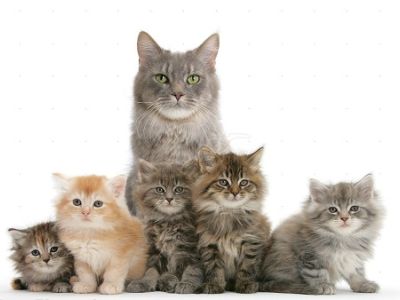Spiny Cat Tongues

A cat’s tongue is covered in hundreds of sharp, scoop shaped spines made of keratin that spring into action during grooming and they also play a role in helping a cat keep cool.
CT scans of cat’s tongues show the structure of the spines known as papillae. The spines are about 2mm long and have a U-shaped cavity at their tip. The hardness of the papillae is similar to human fingernails, showing how tough these structures are. When a cat is grooming, only the spines at the end of the tongue contact the fur. These are larger and not as closely packed as the spines nearer the bottom of the tongue.
Domestic cats spend up to a quarter of their waking time grooming their fur to help remove fleas and loose hairs. If they did not groom themselves any excess debris could tangle fur, causing painful tugging of the skin leading to infection.
As a cat grooms, there are four steps. First the tongue is extended out of the mouth, then the muscles in the tongue expand the surface and the spines rotate to become perpendicular to the tongue. The tongue then sweeps through the fur and is taken back into the mouth with a U-shaped curl. The U-shaped cavity of the papillae function as a wick in the mouth to take up saliva.
In real terms, an average cat will produce approximately 4 microlitres of saliva across 290 spines. This volume equates to around 5% of the total saliva on the surface of the cat’s tongue. This does not sound like much, but it can deposit saliva, via this method, down to the cat’s skin, which also supports cats in warmer climates to reduce their body temperature. We need to remember that we automatically relate to domestic cat’s, but it is the same process for felines as in cougars, bobcats, snow leopards, tigers and lions. Cats spend about a quarter of their awake time grooming, this is about 2.4 hours and they lick about once per second.
By working out how far spines penetrate cat fur and measuring the length of fur in different breeds, the only cats that cannot groom themselves effectively are domestic Persians. This means if you own a Persian you need to take the time to brush them to avoid skin damage and infections.
So, the next time you watch a cat grooming, take a moment to marvel at just how awesome science is in the evolutionary design of its tongue.



